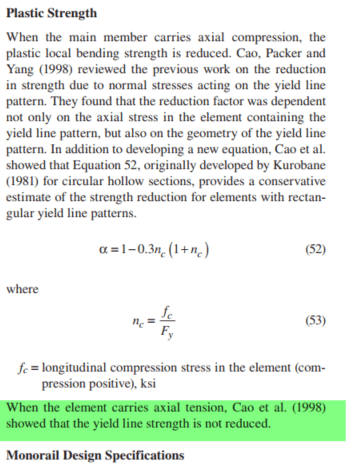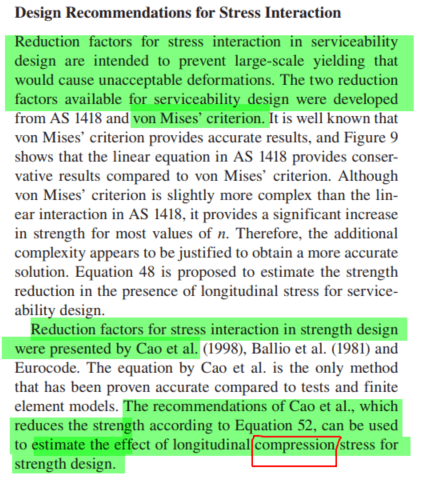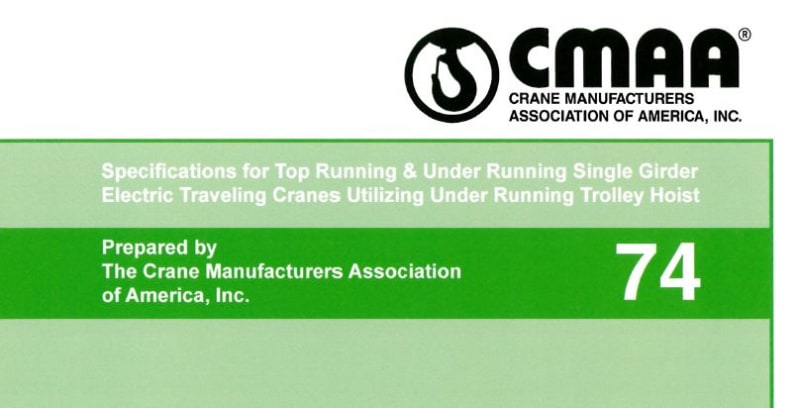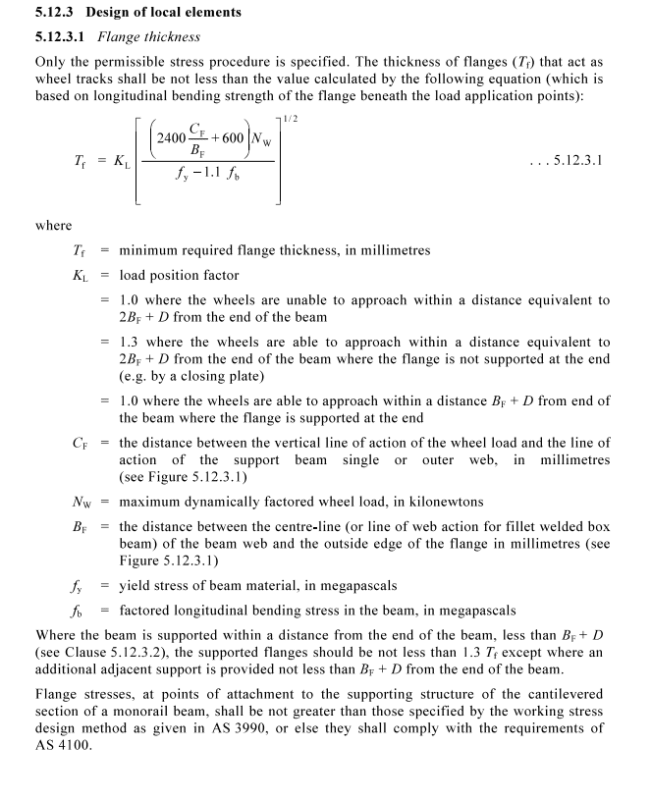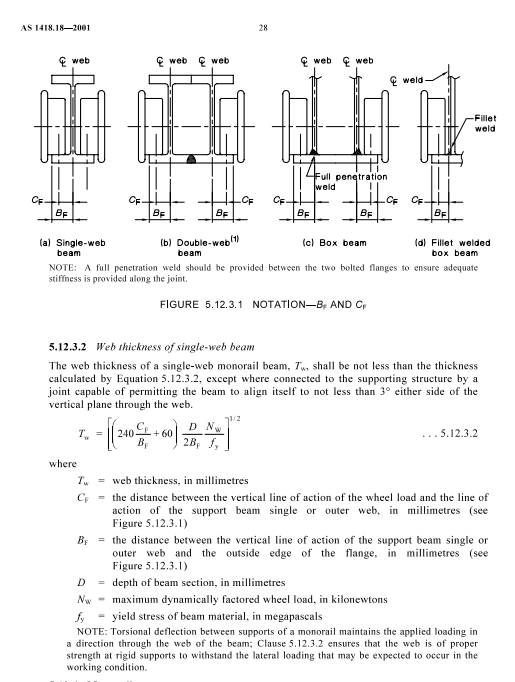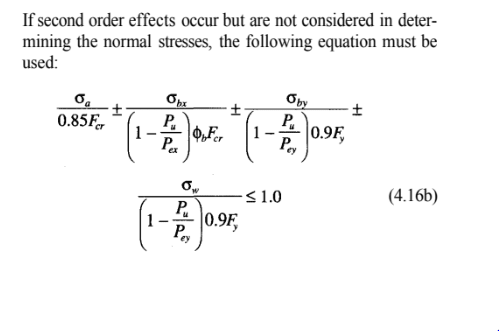Good afternoon!
I'd like to get opinions from others regarding the combination of normal stresses in a singly-symmetric monorail beam according to A360-16 and AISC design guide 9.
Typically, we design for a lateral load applied at the bottom flange and a vertical load with an impact factor.
We usually do a buckling / capacity check in accordance with design guide 9 as well as a stress check.
For the stress check, we check top and bottom flange separately.
We combine the stresses and ensure the top and bottom flange remain less than phi*FY (elastic).
For the capacity check, I have attached a sketch which shows how I intend to combine the stresses for both top and bottom flanges (checked separately again).
Now for the question...
For the capacity of the bottom flange (under global tension), is it reasonable to use the full tension flange capacity (assuming LTB would only apply to the top flange check)for the vertical load component?
I believe the attached sketch will help convey my question if it is unclear.
Thank you!
I'd like to get opinions from others regarding the combination of normal stresses in a singly-symmetric monorail beam according to A360-16 and AISC design guide 9.
Typically, we design for a lateral load applied at the bottom flange and a vertical load with an impact factor.
We usually do a buckling / capacity check in accordance with design guide 9 as well as a stress check.
For the stress check, we check top and bottom flange separately.
We combine the stresses and ensure the top and bottom flange remain less than phi*FY (elastic).
For the capacity check, I have attached a sketch which shows how I intend to combine the stresses for both top and bottom flanges (checked separately again).
Now for the question...
For the capacity of the bottom flange (under global tension), is it reasonable to use the full tension flange capacity (assuming LTB would only apply to the top flange check)for the vertical load component?
I believe the attached sketch will help convey my question if it is unclear.
Thank you!

